Thank you, Prof; @yohan2on for another well laid out and detailed class.
1. Who are Super Representatives, SR partners and SR candidates? (The Governance of the TRON Ecosystem)

Image Source: Pixabay.
The Tron ecosystem designed an on-chain governance mechanism that characterizes the process of the DPOS algorithm. Super Representative Partners (SRPs) and Super Representatives (SRs) can make initiation voting requests for proposals. After the vote, all votes from the SRs are counted to determine if a proposal takes place.
The election is decentralized, by the election, TRON public chain makes two types of roles: which are Super Representative partner(SRP) and Super Representative (SR), and they take part in the on-chain governance. An SR/ SRP can make initiation votings for peculiar proposals, and other (SRs/ SRPs) can also give their subjective to the proposals by their vote, which makes sure that the blockchain governance is decentralized entirely.

Image Source: Pixabay.
Super Representatives
The top 27 candidates that has the most votes are the **Super representatives** . What Super representatives do are package transactions, to generate blocks, and get voting and block rewards. In another word, the account that made the top 27 individuals among one hundred and twenty-seven candidates (127), that is voted for once every 6 hours are Super Representatives. The role they play in governing the TRON community is by making sure of the basic functions like generating blocks, obtain corresponding earnings and record transactions.
Tron account holder that has an interest in becoming Super representatives can applying and every account can vote for super representative candidates, it's just that only the top 27 candidates that have the most votes are super representatives, and the 28th to 127th is what they call Super partners.
SR Reward
TRON Protocol network will generate a block every 3 seconds, each will give 32 TRX to each Super Representatives, so 336,384,000 TRX will be given to 27 Super Representatives in a year.
SR Partners
Since Super Representatives are from 1st to 27th position, then the witnesses from 28th position to 127th position are called **SR Partner.** In other words, after the once in 6 hours Vote, the Super Representatives are the ones that have the highest votes which are from 1 to 27. So, accounts that made 28th to 127th position are the ones SR partners (Super Representatives partners)
SR partners reward.
127 are the individuals that the entire token holder community elected by vote will share 115,200 TRX. The reward will be divided according to the number of votes each candidate have. All candidates rewards will be 168,192,000 TRX in a year. 127 candidates are updated once every 6 hours.
SR Candidates
The witnesses that didn't make any positions from 1st to 127 positions but they made 129th position are called SR Candidates. In the hours' vote, we have Super Representatives and those are the ones that made the 1st to 27th position, then SR partners are the ones that made 28 to 127th position, while SR candidates after 128 are called SR partners.
*in conclusion, the top 27 accounts are SR, the accounts from 28 to 127 are Partner, the accounts after 128th are Candidates. But only the SR can make blocks.*
2. What’s the difference between DPOS and POS consensus mechanisms?

Image Source: Pixabay.
PoS and DPoS are calculations that drive blockchains to reach discretion thoroughly and democratic way.
Proof of Stake (PoS) is a calculation hired by protocols of cryptocurrency to reach a consensus. In PoS blockchains, a user or an entity is chosen using an algorithm to make transactions verification with computer hardware that bases on the tokens that they staked or locked in the network.
DPoS is an evolution of the PoS concept that's well known, where network users vote and choose delegates to render the next block valid by vote. We can call delegates block producers or witnesses. With the use of DPoS, you can vote on delegates by staking your tokens into a pool and linking them to an essential delegate. You can't send tokens to another wallet, instead of that, you can make use of a staking service provider to stake your tokens in a staking pool.
The difference between PoS and DPoS:
In PoS, all the investors have the right to what occurs on the blockchain. Hence, **how many tokens holders have is still determined by the voting power they have.**
But in DPoS, delegates are voted in by token holders. Their work is to make sure that their node is running smoothly always, to make transactions valid, and to work in the network’s best interest at all times but the DPoS system make sure the network is self-governed by **all** of its participants.
*These two protocols have their own merits and demerits. It’s hard to decide which one is actually the best simply because the systems have the chance to work well or to fail, it depends on the people who are vote in and run the systems.*
3. Write a Step by Step tutorial showcasing how to stake/freeze TRX and vote for SRs.
Step by step on how to stake/freeze trx
*If you didn't have a Tron-link wallet on your device, then download it.
*After downloaded create a password.
*Create a new wallet you if never had before and make sure you save your phrase for you not to lose your tokens.
*After, this is how your new wallet would look like below.
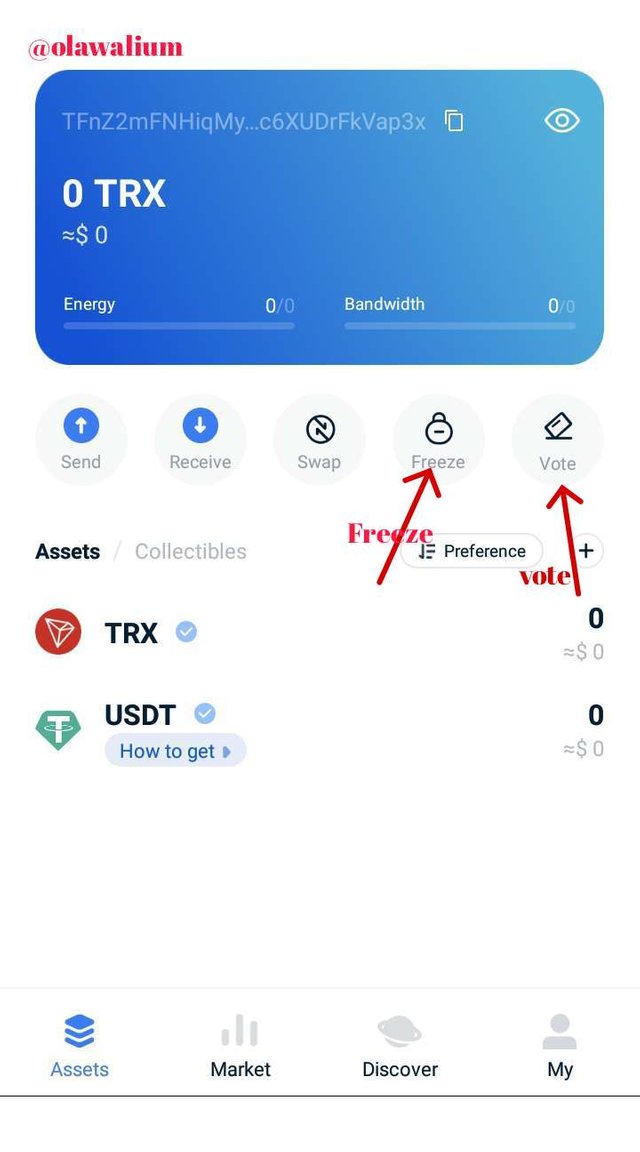
*For a new Tron-link account, you need to activate the wallet by sending some tokens to it.
*As you can see, the balance is zeros and without at least 1 Trx, you can't have anything to freeze and you cannot vote for SR.
*Now I've sent 5 Trx to the wallet and now I can freeze token and then vote for SR.
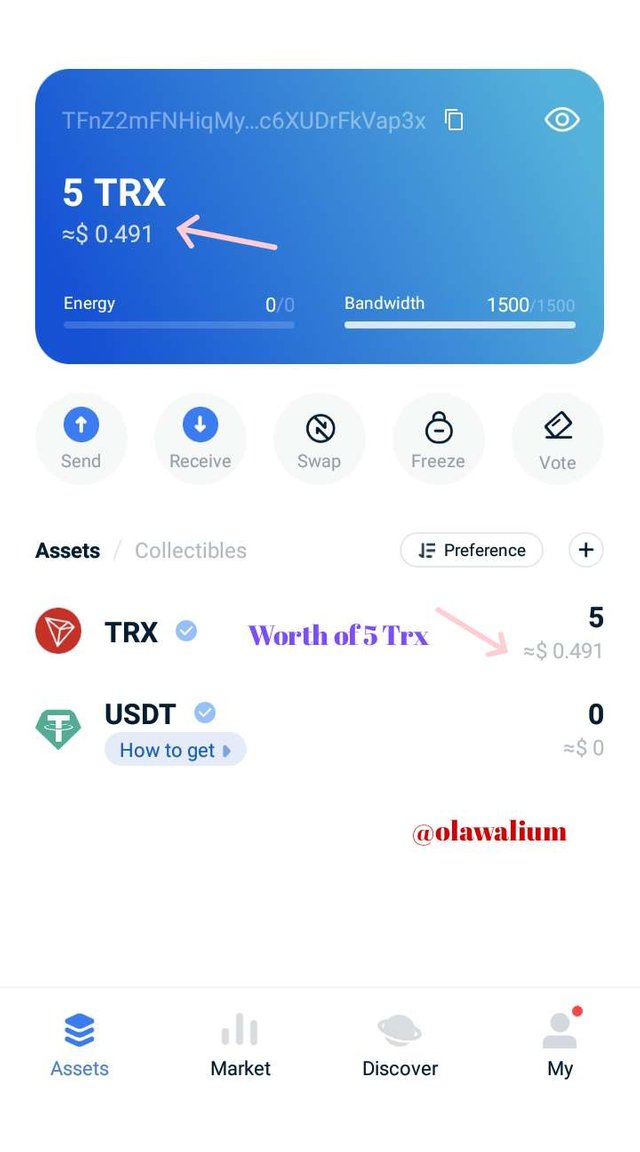
Below are the steps by steps on how I froze 2 TRX
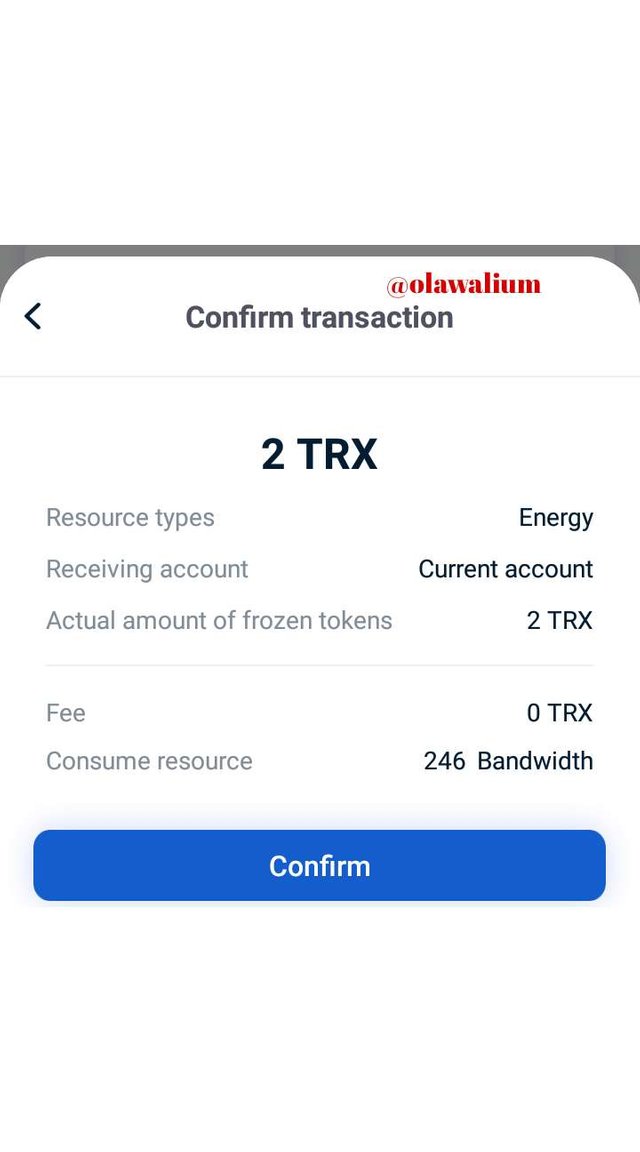
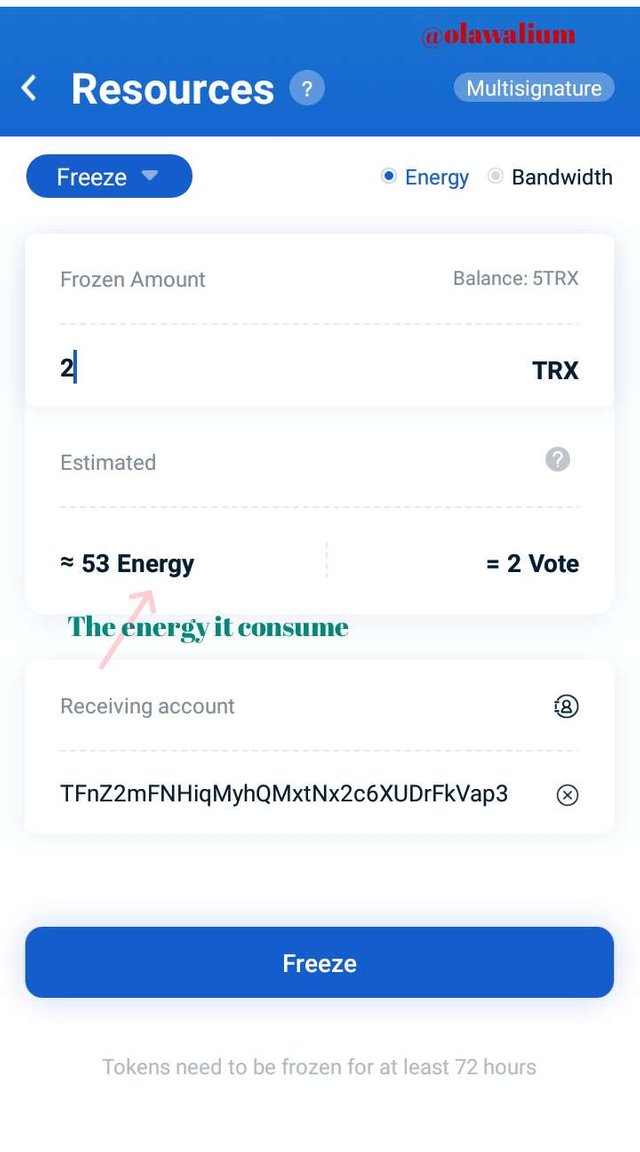
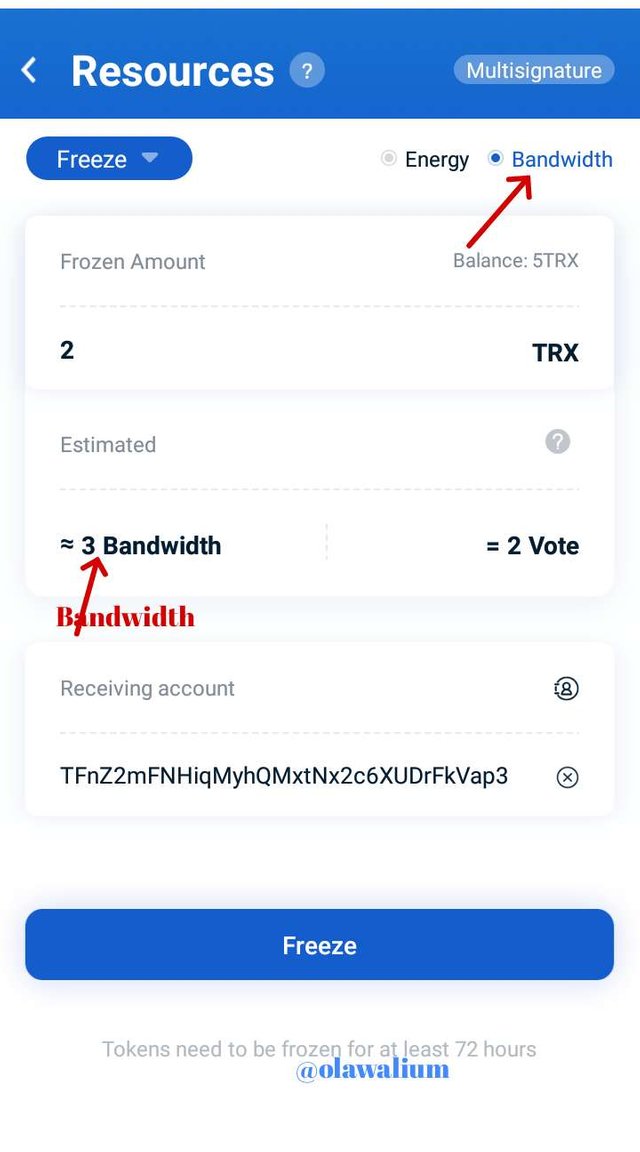

After the password, it staked successfully.
How to vote for SR
Note that the number of trx you staked is the amount of voting you can make. No freezing, no vote
I have just 5 trx in my wallet, then I staked 2, remaining 3, the 2 that I staked are my voting power
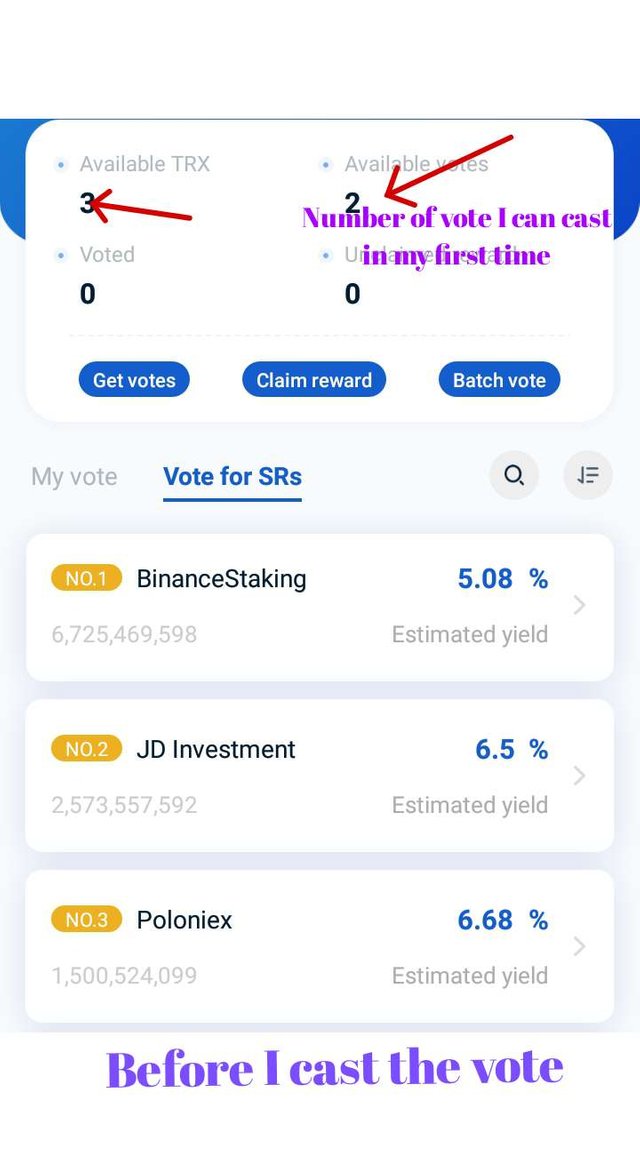
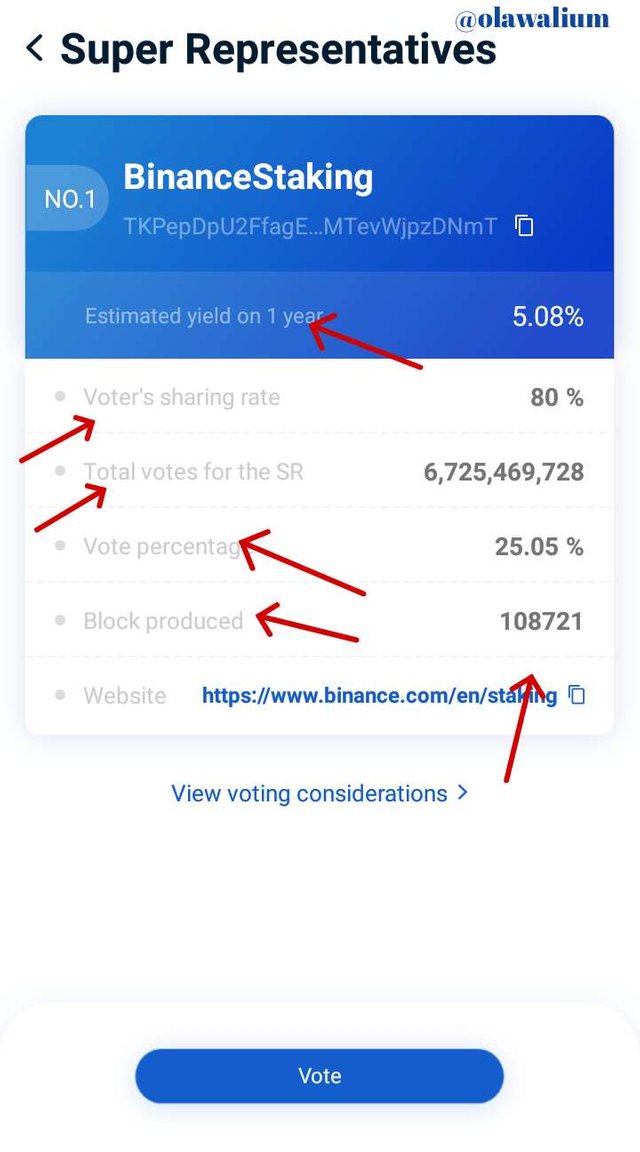

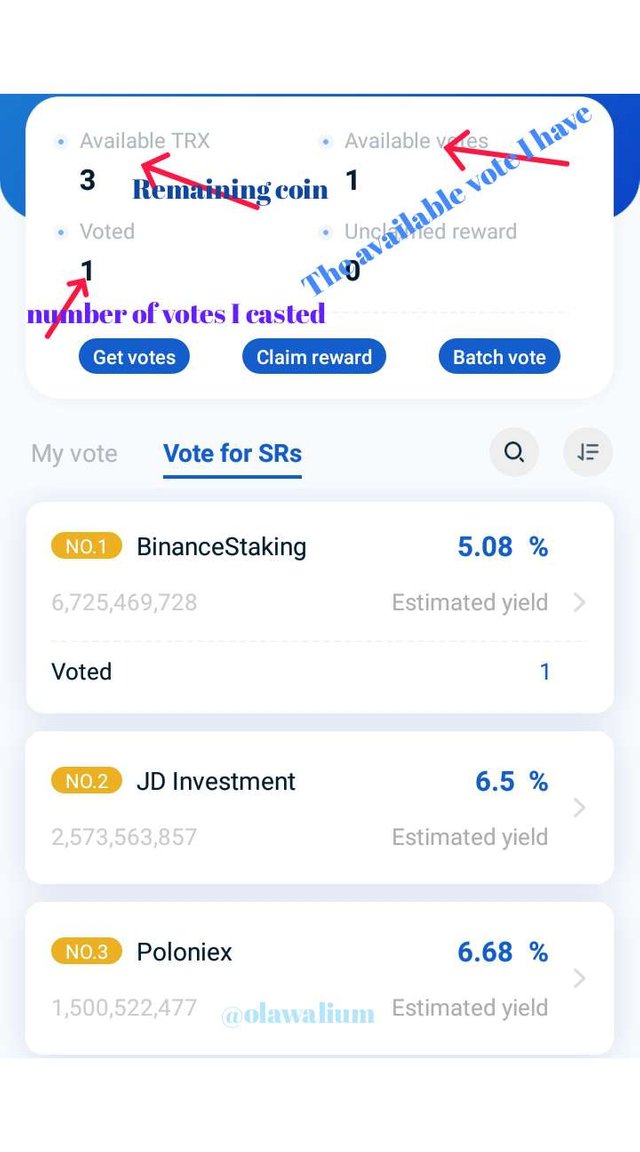
Conclusion.
The Tron governance ecosystem is decentralized, users decide what they want and who they want by vote, the top rulers are 27 in numbers while the next ranks in rulers are 28 to 127 and it doesn't mean they would be there for a long period, power might shift to another place after a vote in 6 hours. The number of trx you staked is your voting power and you can also contest to be among the SR.
References:
1
2
3
4
Plagiarism Report:
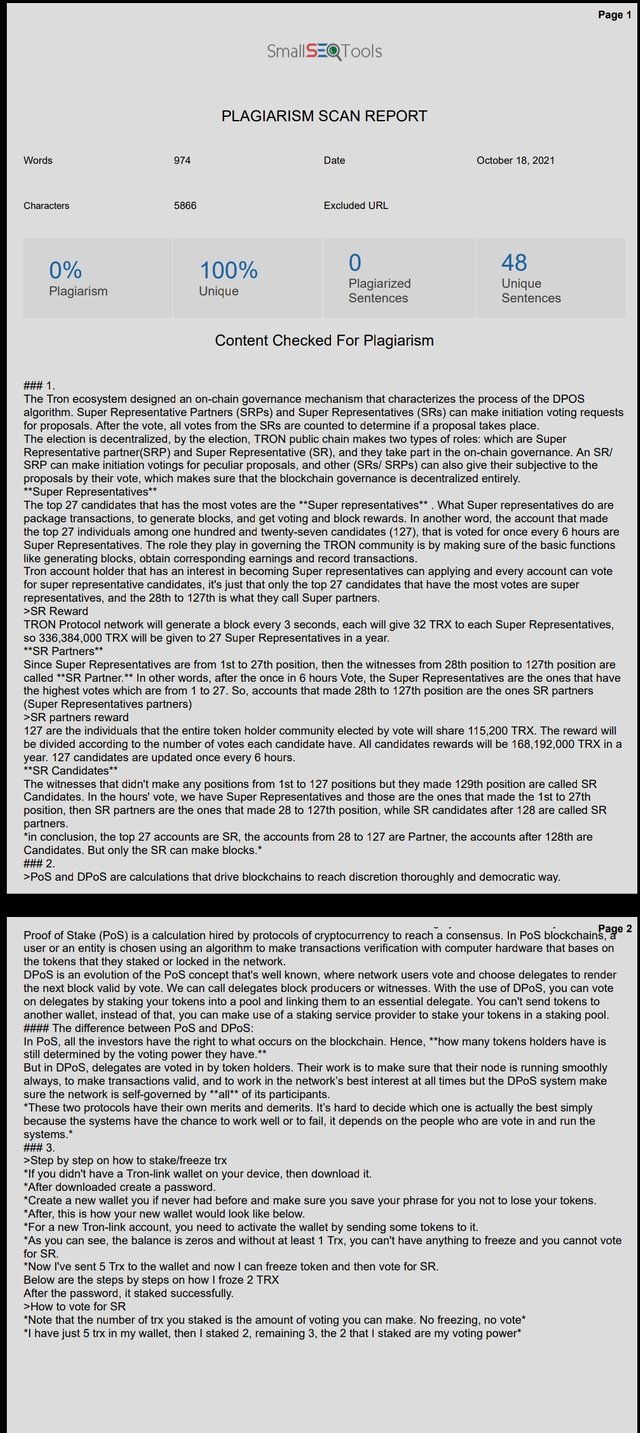
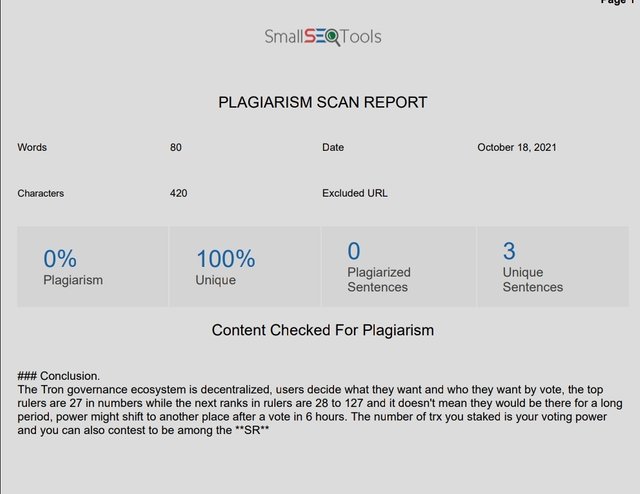
Thank you for your time.
My pen doesn't bleed, it speaks, with speed and ease.
Still me,
My tongue is like the pen of a ready writer.
Olawalium; (Love's chemical content, in human form). Take a dose today: doctor's order.















Hi @olawalium
Thanks for participating in the Steemit Crypto Academy
Feedback
Total| 5/10
This is average work done. You gambled a lot on the difference between DPoS and PoS. You needed to do enough research on them in order to share clear information about them. Secondly, your article lacked an in-depth analysis of information regarding the governance of the Tron Ecosystem.
Ouch. I am so sorry Prof. I hope to do better. Thank you.